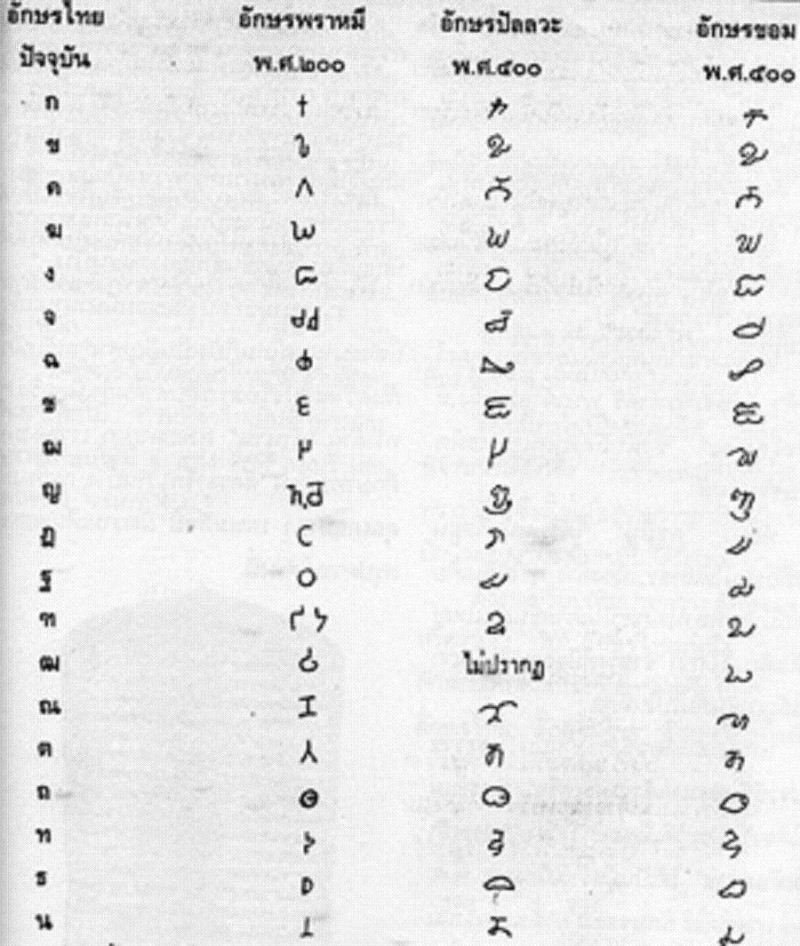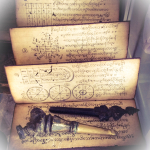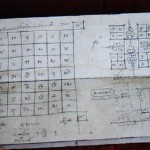Agkara “KHOM” – Khmer Sanskrit Occult Texts and Buddhist Suttas
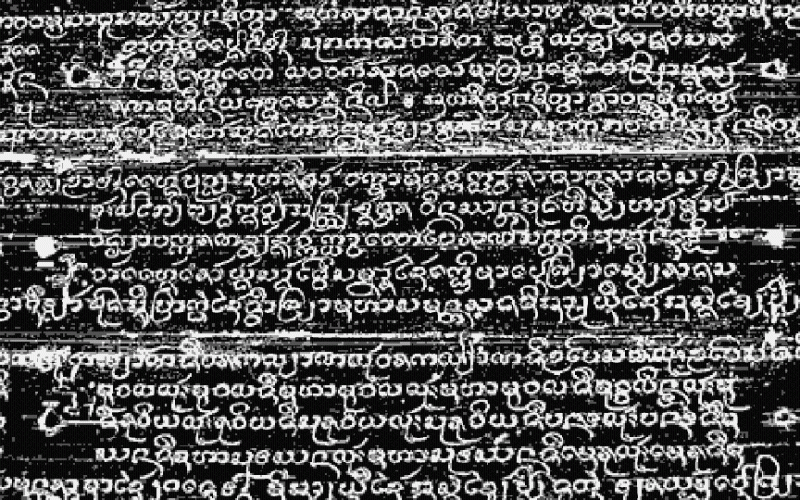
Above pic; Aksorn Jareuk Khom – Ancient Khom lettering inscribed on a wooden booklet – in ancient times Religious and magical scriptures were written on wooden or parchment leaves. Before Por ramkamhaeng invented the Thai Alphabet – this was the Alphabet most would use to write in – which is Khmer in origin and based on Pali Sanskrit language.
- Kampir Yant Akom Tai Yai – Chiang Saen region Occult Grimoire on parchment – circa 100 years old. © Ajarn Spencer Littlewood & Sakyant Foundation Museum
- Kampir Yant Samud Khoi – Black Parchment Occult Grimoire in Khom Lanna Sanskrit
- Ancient Khom Agkhara in a grimoire from Mukhdaharn, which is based in ‘Horasart’ (Astrology)
Pasa means “language”, and “Khom” means “Khmer”.All, or almost all yant use Vedic and Buddhist psalms along with acertain amount of Khmer sorcery, using the Khom script and the Palilanguage. KHOM AGKARA The spells, psalms, prayers and mantras used to write around and within the sacred yant designs are written in ” agkarakhom”. khom is an ancient form of Khmer (Cambodian script), that used Pali as it’s language (Maghada Sanskrit).This is considered to be a Sacred language and alphabet, and is used exclusively for Buddhist prayers, magick, sacred texts and Kata (mantras).

Kata Na Moe Put Taa Ya
There are various variations of this Agkara (agkara means lettering), ranging from Cambodia, through Thailand and Laos passing the Hill tribes of Mon and Gariang (Karen) into Burma itself. The Khom Alphabet has traditionally 33 consonants and 8 vowels, which can beconverted into 12 vowels if you include compound vowel variations.There is also a form of writing Thai using Khom lettering which uses amixture of the Thai and Khom vowels.Thai Khom is far more complex to learn that traditional Khom, due to the additions made in vowels and tonal symbols, which for the Khom purist would seem to not make sense at all.
Below pic ” Kampir Horasat Thai” – (an old Thai Astrological Grimoire) kept in the Hor Gaew building in Don Dtan (Mukdaharn)
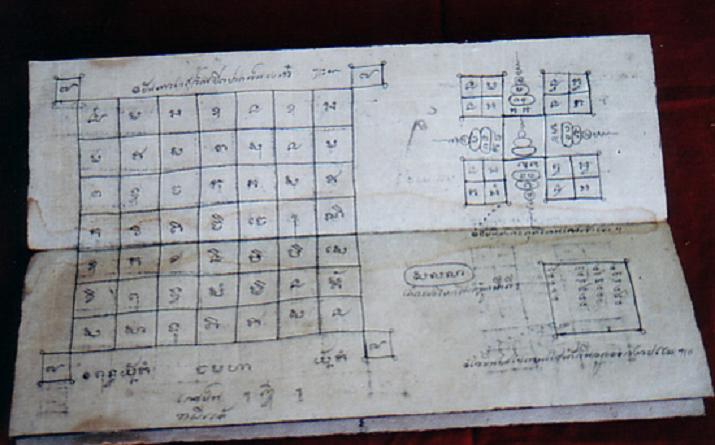
The Khom consonant has a built in vowel with it (A sound, as in cat) – so the letter g for example would be pronoinced “Ga” – in this way, it is completely uneccessary in many cases to place the vowel “A” between two consonants, and is therefore possible to write many words with just 2 or 3 consonants and no vowels, but the word will still be pronouncable! – For example; to write mkk would be pronounced “makka” (meaning “way” or “path”)
In addition, there are two versions of each consonant, one above, and one below 9when written) the ones written below other consonants are used when you do not wish the automatic “A” vowel to be added to the end of a certain consonant. let me explain; If as in the above example you write M+K+K in a horizontal line, then it reads MaKaKa, not Makka. So how do you get it to write Makka? Easy! when you get to the two “K” letters, you use the top K consonant and the bottom K consonant below it. This makes you read the bottom one first with no “A” vowel (for it is stuck to the top K letter, through rule of grammar) and then the top K latter is read last with the A vowel following it – the top and bottom storey versions of each consonant are slightly differing so you can recognize them when written (which you would anyway because they are written below or above each other). In the list below you can see each consonant in its top and bottom storey versions (see how they are written in groups of two one above the other?)
Below Pic – Basic Khom Alphabet (Consonants)
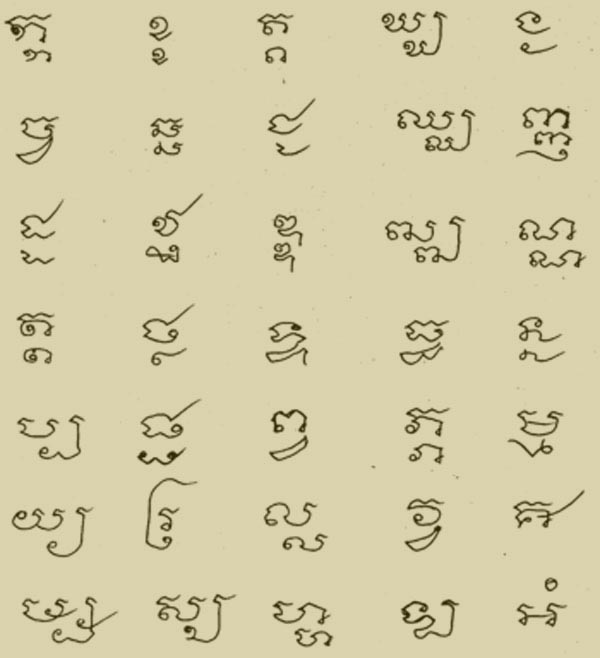
Here with English transliterations
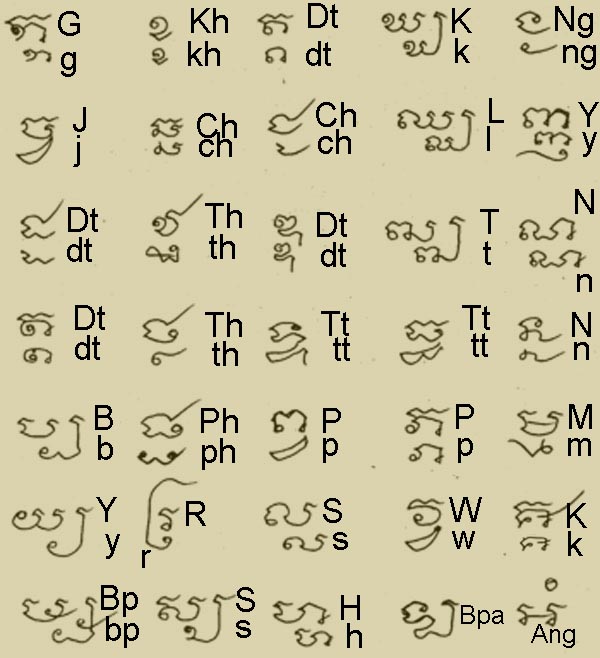
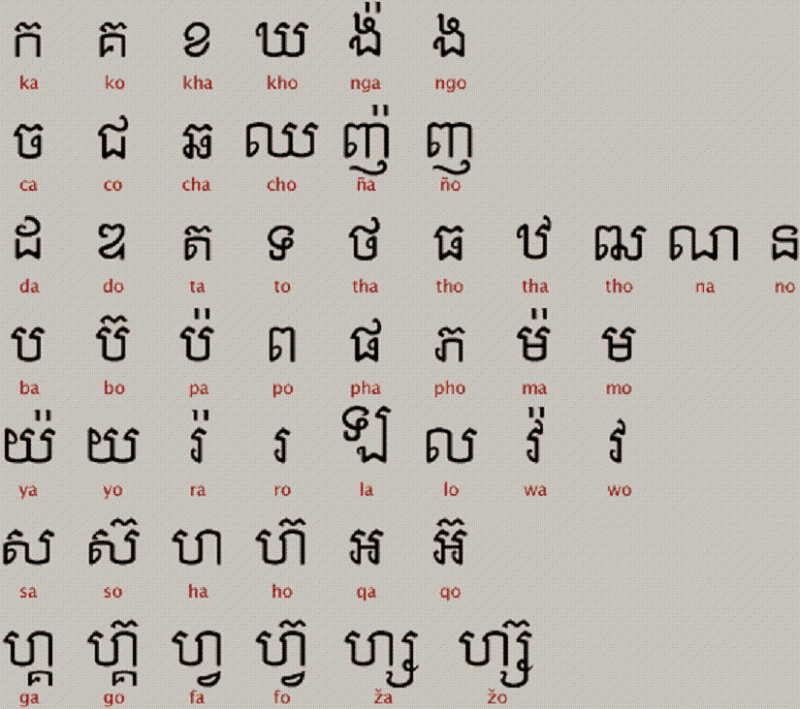
P
Other magical Thai alphabets;
Another variation of magical lettering is the Lanna tradition (this is the common alphabet – there is another used for Yant, which i shall be publishing as soon as i am able to) – the letters below the Lanna ones are Thai letters in transliteration
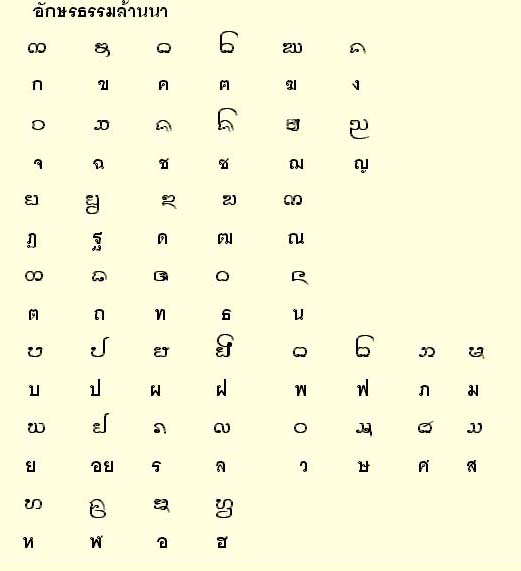
The below image shows comparisons from Thai, Brahmin, Pallava, and Khom (in that order from left to right)
